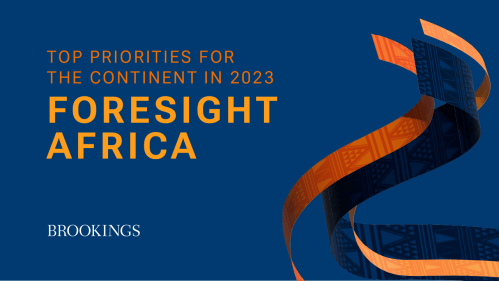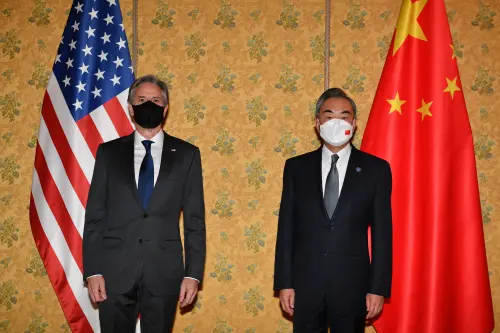Editor’s Note: During the United Nations High-Level Meeting on Youth, Allison Anderson of the Center for Universal Education delivered remarks at a side event with the Earth Child Institute, the United Nations Environmental Programme (UNEP) and the World Association of Girl Guides and Girl Scouts and UNICEF. The larger event was the culmination of the International Year of Youth, in which youth participation and dialogue were recognized as indispensible elements of sustainable development. The side event featured a panel of youth leaders from around the world who shared their experiences working with children and youth on environmental and climate change actions. Presentations highlighted effective practices for youth-to-child mentoring and peer-to-peer learning for action on the environment, climate change and sustainable development in Kenya, Haiti, Nepal, and the United States, and elsewhere around the world. Anderson responded to the panelists’ presentations and offered a challenge to the group to improve coordinated action and messaging on climate change action and education and to specifically call upon governments and other policymakers to allocate climate change funding to deliver quality education for sustainable development.
Thank you for the opportunity to respond to the inspiring presentations of these youth leaders. While climate change poses one of the most serious challenges to reducing global poverty and achieving sustainable development that the international community has faced, it is clear from these presentations that youth-led action on climate issues offers an opportunity for enhancing inter-generational dialogue and action, be it youth-to-child mentoring, peer-to-peer teaching or youth-to-adult education.
I work for the Brookings Institution’s Center for Universal Education, which develops and disseminates effective solutions to the challenges of achieving universal quality education around the world. In particular, I am focused on researching and informing policy on the role of education in climate change adaptation and mitigation efforts, including the active participation of young people as agents of change. These speakers are part of a wider movement of young people at the forefront of effective climate action around the world. There are numerous additional examples; for instance:
- In India, the Club of Youth Working for the Environment created a mobile resource centre — the Prakriti Environment Education Bus— is a one stop-shop for environment education led by young people, for young people. Partnering with local youth organizations, over 100 youth have been trained and are active in setting up exhibitions, activities, games, films, demonstrations, puppet-shows and group discussions, especially in areas with limited educational access.
- In Santa Paz, the Philippines, students learned not only about the causes and consequences of landslides facing their communities but also about risk assessments, including a 2006 study that found the Santa Paz National High school was smack in a landslide prone area. Despite opposition from some sections of their community, students successfully educated and persuaded people to move the school to safer ground.
As we move forward with climate change action, it is important to ensure gender equity in this work. New research findings from Bangladesh and Ethiopia released in June by Plan International in the report “Weathering the Storm: Adolescent Girls and Climate Change” show not only how climate change disproportionately affects girls, but also how girls’ agency is crucial for tackling future challenges of climate change. The girls themselves who are involved this research from Ethiopia and Bangladesh – as well as girls and boys involved in research and climate action projects around the world — have clear priorities about what they feel is needed: they demand greater access to quality education and skills in relation to climate change. Based on their experience, they say girls and boys who acquire greater understanding of social and climatic risks will be able to develop the skills and confidence to better protect themselves and their wider community.
Studies by the World Bank and Center for Global Development affirm the critical role of education in adapting to climate change, stating that educating girls and women is one of the best and most cost effective ways of ensuring that communities are better able to adapt and thus less vulnerable to extreme weather events and climate change.
Climate change adaptation and mitigation strategies require learning new knowledge and skills and changing behaviors in order to reduce vulnerabilities, manage the risks of climate change and build adaptive capacity and resilient societies. And to pick up on what each panelist touched on in his or her presentation: it isn’t a lecture-based, top-down educational pedagogy that works, but rather active learning through applying new knowledge to relevant projects in which learners gain skills and see firsthand the impact of their work, what Alex called “project-focused service learning.”
As we conceptualize climate change education for sustainable development, it is important that we understand it within a comprehensive and integrated framework, in terms of both formal and non-formal learning. Climate change education is not only climate literacy and environmental education – which are critical elements – but it is also disaster risk reduction education, green technical and vocational education training, livelihood diversification, and critical thinking and decision-making skills. It is also the policy inputs and infrastructure involved in ensuring safe and adaptive as well as green and sustainable schools. Research and experience from countries around the world shows that with this integrated and comprehensive framework for climate change education, educated and empowered young people are effective risk communicators and catalysts for behavior change among younger children, their peers, parents and other community members outside the classroom.
I’d like to end by posing two challenges for our discussion here today and for all of us to take forward once we leave this room. One challenge that emerged in each presentation is the question of how best to facilitate the global exchange of climate change action and education good practice initiatives and innovations. How can we better communicate, learn from and build upon each other’s lessons learned, so that we aren’t duplicating efforts but leveraging success?
The second challenge is around effective global action: signatory States to the United Nations Framework Convention on Climate Change (UNFCCC) are right now negotiating how to mitigate climate change and how best to support and finance climate adaptation policies. As signatories to the UNFCCC, governments have already committed to “educate, empower and engage all stakeholders on policies related to climate change” (Article 6). This presents an opportunity for the international community – for all of us in this room— to call upon governments and other relevant policy-makers at local, national and international levels to allocate climate change funding to deliver quality education for sustainable development and training that increases climate change adaptation and mitigation knowledge and skills, and the leadership of young people within this.



Commentary
Youth Empowering Children: Intergenerational Approaches to Climate Action
July 25, 2011